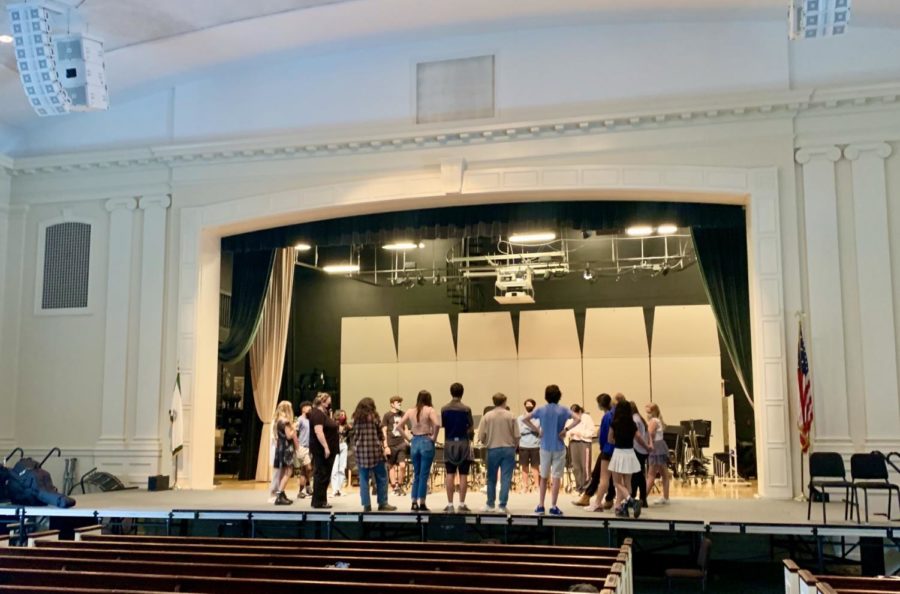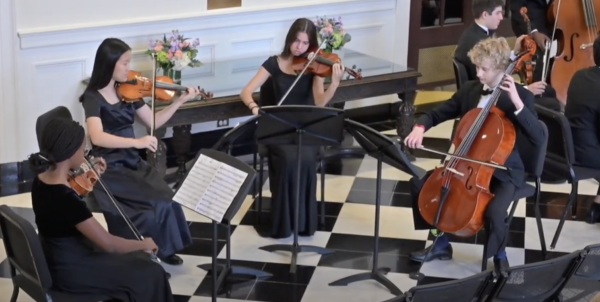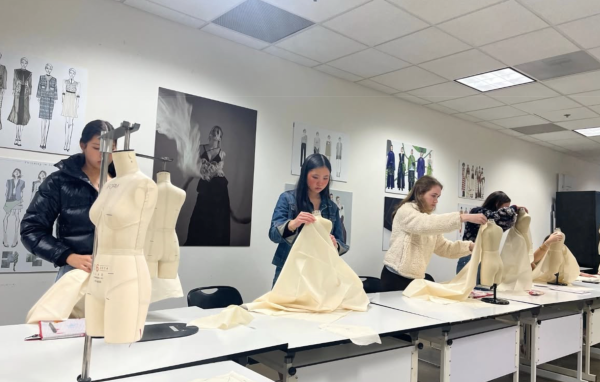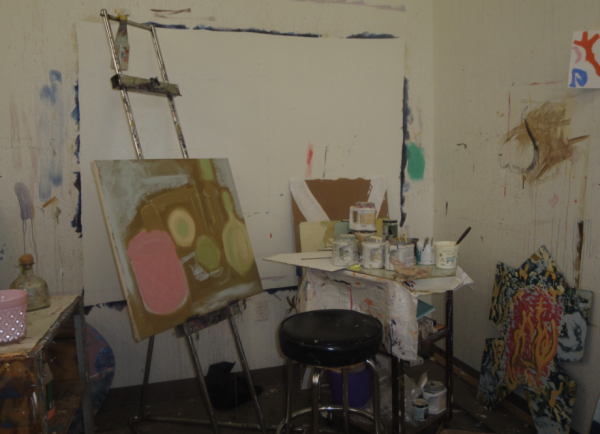The Westminster fall plays return
After a year of outdoor singing, showcases, and foggy clear masks, Westminster theater has returned. Museum, a story of a security guard dealing with eclectic visitors on the last day of a museum exhibit, and Hamlet, Shakespeare’s tragedy of a young fatherless prince and his spiral into insanity, will be shown on the beloved Kellett stage this fall.
“People should be aware that the audience is open to the general public,” said director of theater arts, Kate Morgens.
Earlier this year, students prepared for auditions, selecting one classical Shakespearean monologue and one scene from Museum. Neither were expected to be memorized, but in the excitement of returning to a traditional in-person audition, most students were “off-book.”
“I was more overly prepared because I was so excited to be back in person for auditions, and it was so much better than the FlipGrid auditions last year,” said freshman Anne Cox. “So I tried to get it as memorized as I could so that I wasn’t glancing down at the paper as much as I normally would.”
On the day of auditions, students arrived at Broyles and waited in the old Campus Center to be called in by the student directors. Once they heard their name, they walked into the theater and waited for the auditionee before them to end their performance.
“The audition process was very laid-back; everyone was super supportive. It was a super friendly environment, and it was very welcoming,” said freshman Cate Carroll.
Auditions were held on Aug. 16 and 17, callbacks for Museum were on Aug. 18, and callbacks for Hamlet were held the day after. Both callbacks worked similarly: students waited in the campus center for their turn.
“Actors should make unique and exciting choices for auditions and should look like they are prepared, confident, and ready to be there,” said Morgens. “If they make choices that are not perfect for the character, I kind of don’t care; I would much rather they choose anything, so I see that they can do something. But, when it comes down to the callback, I do want them to be more show-appropriate.”
After the cast lists were posted, rehearsals began with a read-through for both shows, dealing with time management, and focusing on the material rather than acting or blocking. Considering how soon these performances would be, actors were expected to be off-book relatively fast. In Museum, the whole show was expected to be completely memorized in two weeks, while Hamlet‘s cast memorized their script in intervals.
“We are making sure we are taking slow but surely lots of steps forward, especially for people who have larger amounts of things to memorize,” said Morgens. “It will really help them if we sort of do it in solid large chunks at a time instead of just saying the whole entire show has to be memorized at a later date.”
Despite challenges presented by COVID, the theater program persisted in its efforts to perform the show to the best of its ability. In Museum, masks were used as if the characters were at a typical museum in 2021 with a mask mandate. Hamlet’s adaptations to COVID, however, changed some aspects of the show. Scenes requiring physical contact and the removal of masks, such as drinking “champagne,” were no longer performed.
“We are not taking our masks off,” said Morgens.
In addition, both productions allowed the actors to choose their characters’ genders to suit their comfort. Senior Emma Morisson will play Hamlet as a woman, which changed a few facets of the show. For example, Hamlet was changed to be set in the Victorian era because there were more female monarchs around that time.
“We have cast Hamlet, the actress is a female, and we decided that the character is a female,” said Morgens. “That affects language, we are changing all of the pronouns, but we keep things like the word ‘prince’ and ‘my lord.’ Many of the actors are determining whatever genders they want. For example, Horatio, who is generally a cis-male-gendered character, is being played by Mykah Boye, and her character is now a duchess.”
Without the gender limits, more opportunities opened for the cast. For example, Michael Wall, a photographer in Museum, was traditionally a male, but Carroll played Michael as a woman. The theater department hoped to be more gender fluid in their productions, making sure everyone was comfortable.
“With COVID, there isn’t too much of a difference in the overall fun factor and the general community around the actors; I will definitely admit it is a bummer to wear masks,” said senior Walt James, who played the temperamental guard from Museum.
Although masks were a “bummer,” Morgens viewed COVID’s overall impact on the theater as a learning experience.
“Community is the biggest thing we learned. We had to keep contributing. We had to keep being positive. We had to keep supporting each other, or we wouldn’t be able to do it.”




